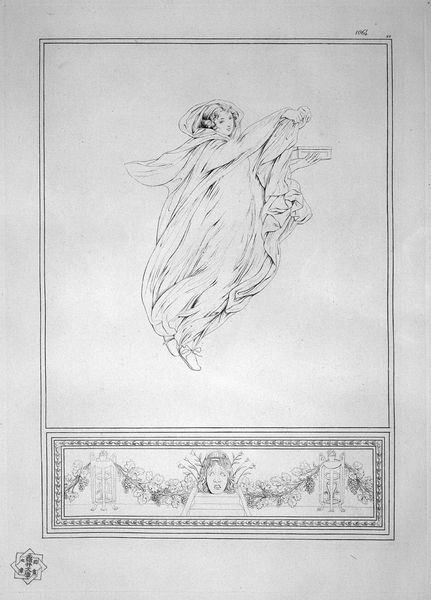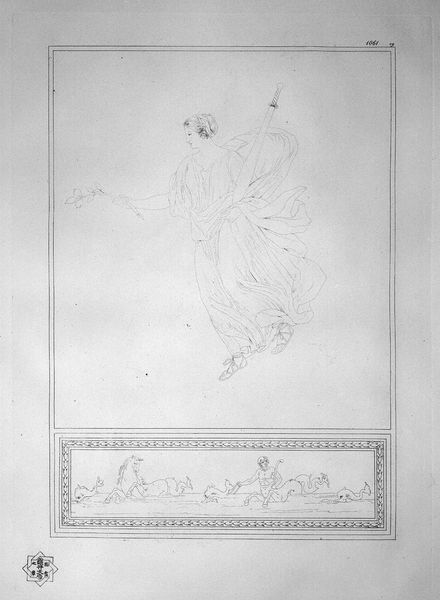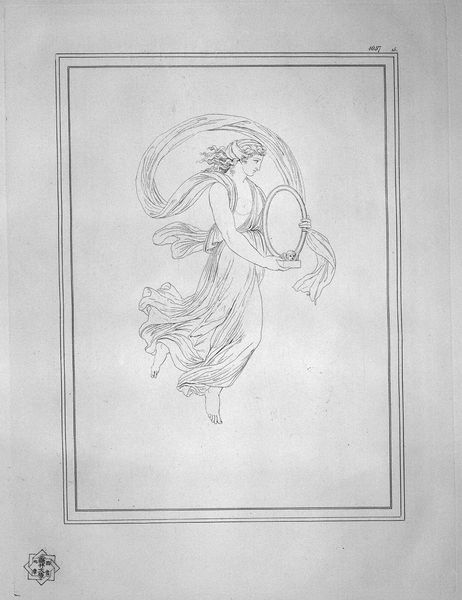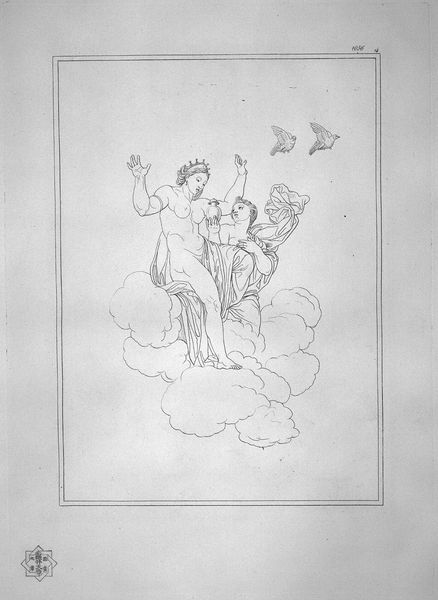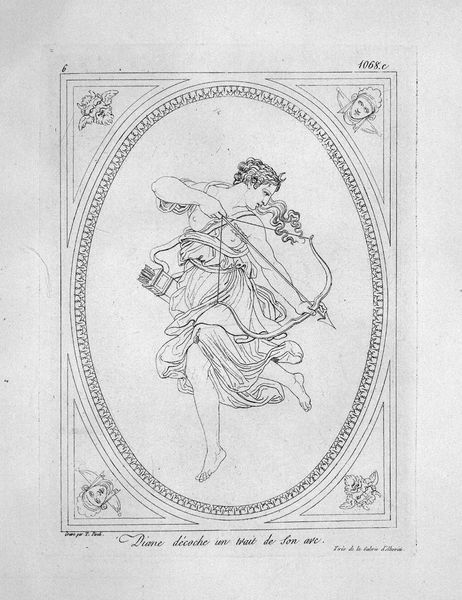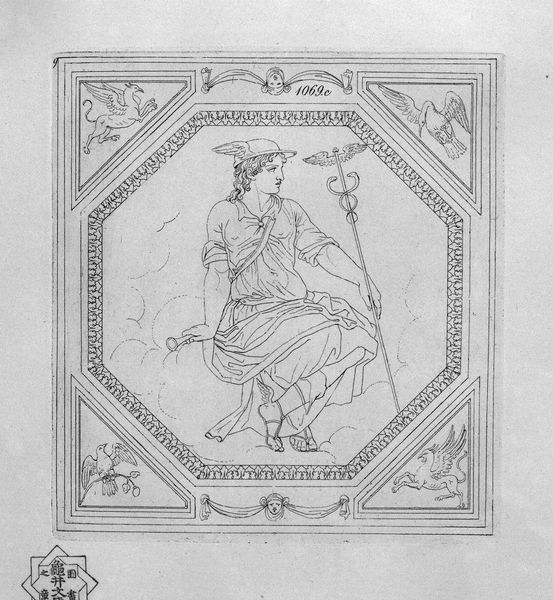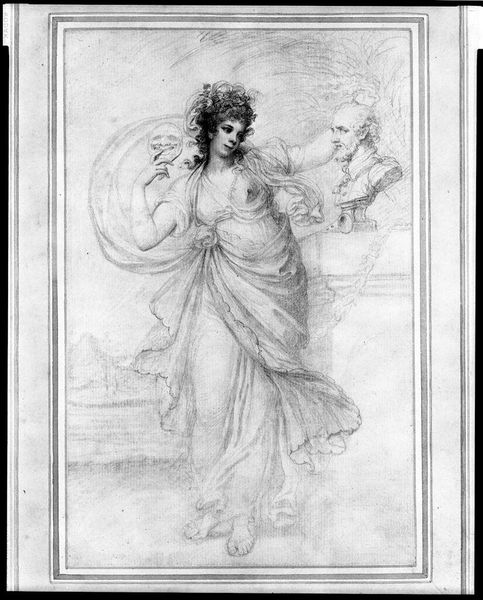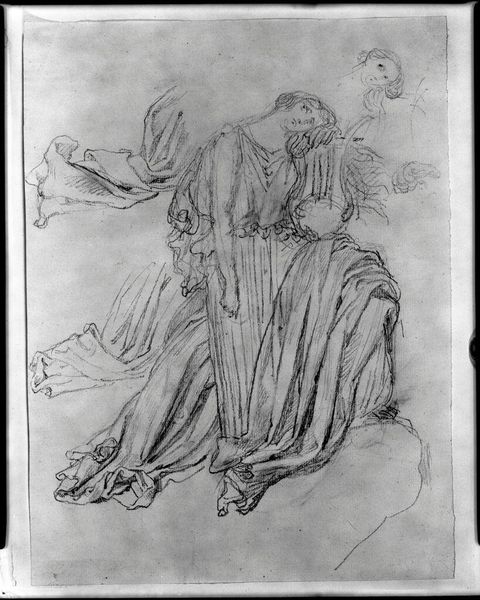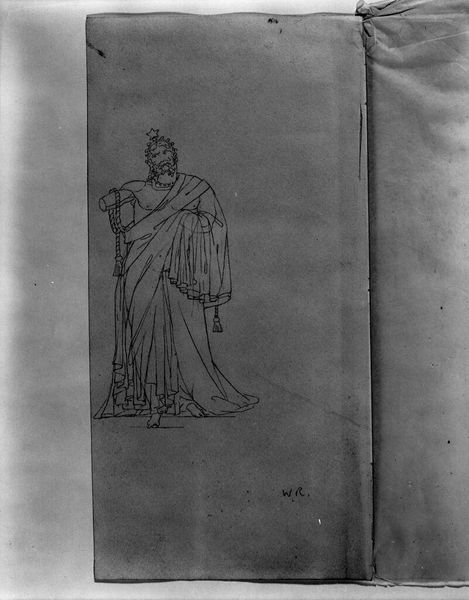
drawing, pencil
#
drawing
#
classical-realism
#
figuration
#
roman-mythology
#
ancient-mediterranean
#
pencil
#
costume
#
mythology
#
line
#
history-painting
#
academic-art
#
nude
Copyright: Public domain
Curator: The delicacy of this pencil drawing by Giovanni Battista Piranesi really strikes me. It's called "Bacchante bearing a plate and a bucket," and presents a full figure above a frieze. Editor: There's a real lightness to it, isn't there? Almost as though she’s floating. The classical garb and the items she carries feel more symbolic than functional, contributing to a dreamlike quality. What do you make of the artist's hand? Curator: Piranesi was such a prolific printmaker; you can see that sensibility informing his line work here. It’s economical, focused. You know, engravings rely on precise linework, and that carries over here, especially in the figure’s draped clothing, emphasizing volume with minimal cross-hatching. The means of production—that printing tradition— really shapes the aesthetic, I'd argue. It's academic, leaning into line, of course. Editor: I agree, the graphic precision draws the eye, but the imagery evokes more than technical skill. The Bacchante herself, a devotee of Bacchus, immediately calls to mind themes of ecstasy and ritual, as suggested by her bearing a libation vessel. Consider how the bottom register further reinforces the symbolic connection to fertility. Curator: Interesting to see fertility alongside the production of pleasure in wine; that does make a compelling case for considering how these images were made and consumed as part of ritual and celebratory practice. She serves it, or provides a means of access. Editor: Exactly. She isn't simply holding objects; she’s presenting an invitation. Note too, how that contrasts against the geometric severity of the rectangular border within the broader blank canvas. I would even argue that this emphasizes an intended break with the "real world" surrounding. It underscores the role of imagery in crafting a culturally resonant experience. The figure hovers within symbolic meaning! Curator: The drawing’s setting itself – seemingly without one – reminds me how neoclassical artwork often served a didactic function. A presentation or illustration; I still cannot avoid the production aspects influencing perception! Editor: And it's precisely in that balance between artistic production and symbolic function, I think, that this drawing gains its enduring power, something we both value. Curator: Indeed, this was illuminating!
Comments
No comments
Be the first to comment and join the conversation on the ultimate creative platform.
